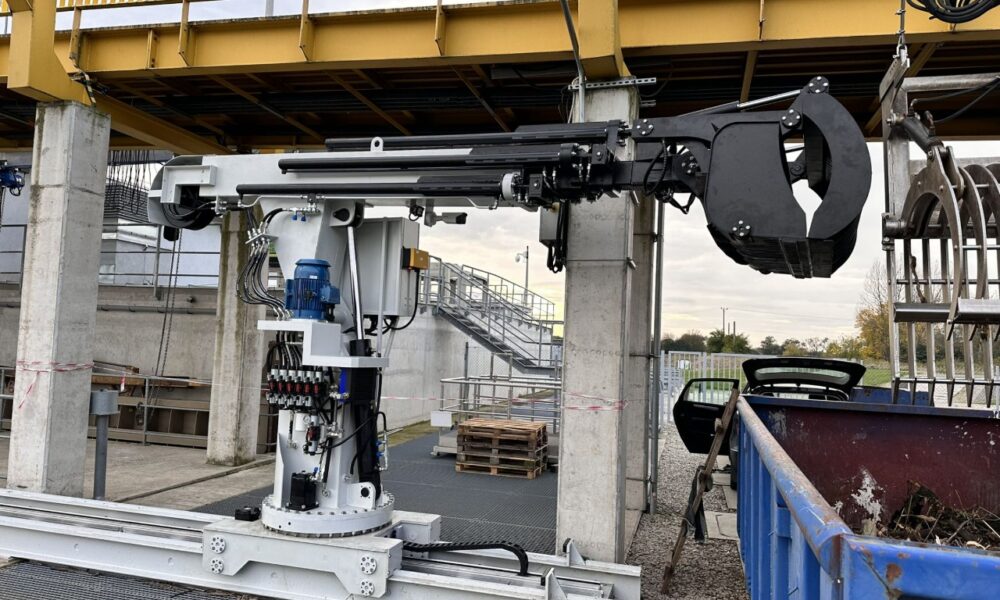Hydraulic Trash Rack Cleaning Machines with Scanners: What Worth to Know

In the realm of water management, the efficiency of hydraulic trash rack cleaning machines is paramount. These machines play a crucial role in maintaining the operational integrity of various water intake systems, including hydropower plants, irrigation channels, and wastewater treatment facilities. As the demand for clean water rises, so does the necessity for advanced cleaning technologies that can handle the increasing debris loads caused by environmental factors. This article delves into the essential aspects of hydraulic trash rack cleaning machines equipped with scanning technology, highlighting their features, benefits, and operational insights.
Understanding Hydraulic Trash Rack Cleaning Machines
Hydraulic trash rack cleaning machines are sophisticated devices designed to remove debris from trash racks, which serve as protective barriers at water intake points. These machines are essential for ensuring that large objects, such as branches, leaves, and plastic waste, do not obstruct the flow of water into pumps and turbines. By maintaining clear intake points, these machines help prevent equipment damage and ensure the continuous operation of water management systems.
The Mechanism of Operation
The operation of hydraulic trash rack cleaning machines is primarily based on hydraulic systems that provide the necessary force to lift and remove debris. These machines typically feature:
- Hydraulic Arms: These extend and retract to reach various depths, allowing for effective cleaning of trash racks situated at different elevations.
- Rake Mechanisms: The rakes are designed to scrape debris off the screens efficiently, ensuring that even stubborn materials are removed.
- Control Systems: Advanced control systems enable operators to manage the cleaning process remotely, enhancing safety and efficiency.
Types of Debris Managed
Hydraulic trash rack cleaning machines are adept at handling a wide range of debris, including:
- Organic Material: Leaves, branches, and aquatic plants that accumulate during seasonal changes.
- Inorganic Waste: Plastics, metals, and other man-made materials that can obstruct water flow.
- Large Objects: Items such as logs and tyres that can cause significant blockages if not addressed promptly.
The Role of Scanning Technology
Integrating scanning technology into hydraulic trash rack cleaning machines has revolutionised their efficiency and effectiveness. This technology allows for precise identification of debris locations, enabling targeted cleaning actions.
How Scanning Works
The scanning system typically employs advanced sensors and imaging technology to create a detailed map of the trash rack area. This process involves:
- 3D Scanning: The machine generates a three-dimensional representation of the trash rack, identifying the exact locations of debris.
- Data Analysis: The collected data is analysed to determine the most efficient cleaning path, minimising unnecessary movements and optimising cleaning time.
- Automated Navigation: Based on the scanned data, the machine can autonomously navigate to the contaminated areas, ensuring thorough cleaning without manual intervention.
Benefits of Scanning Technology
The incorporation of scanning technology into hydraulic trash rack cleaning machines offers several advantages:
- Increased Efficiency: By targeting specific debris locations, the cleaning process is expedited, reducing operational downtime.
- Reduced Energy Consumption: Optimised cleaning paths lead to lower energy usage, contributing to cost savings.
- Minimised Wear and Tear: By avoiding unnecessary movements, the mechanical components of the machine experience less stress, extending their lifespan.
Key Features to Look For
When selecting a hydraulic trash rack cleaning machine with scanning capabilities, several features should be considered to ensure optimal performance.
Robust Construction
The machine should be built from durable materials that can withstand harsh environmental conditions. Look for features such as:
- Corrosion-Resistant Materials: Essential for longevity, especially in aquatic environments.
- Heavy-Duty Components: Ensure that the hydraulic systems and rakes are designed to handle significant debris loads.
Automation and Control
Advanced automation features enhance the usability of these machines. Key aspects include:
- Remote Operation: The ability to control the machine from a distance increases safety and convenience.
- Programmable Logic Controllers (PLC): These systems allow for customisation of cleaning cycles and operational parameters.
Maintenance Requirements
A good hydraulic trash rack cleaning machine should have low maintenance needs. Features to consider include:
- Easy Access to Components: Design should facilitate quick inspections and repairs.
- Self-Lubricating Systems: These reduce the need for frequent manual lubrication, saving time and effort.
Operational Insights
Understanding the operational aspects of hydraulic trash rack cleaning machines can help maximise their effectiveness.
Regular Maintenance Practices
To ensure optimal performance, regular maintenance is crucial. Key practices include:
- Routine Inspections: Regular checks for wear and tear can prevent unexpected breakdowns.
- Cleaning of Collected Debris: Proper disposal of debris collected by the machine is essential for environmental compliance.
Training for Operators
Proper training for operators is vital to ensure safe and efficient machine operation. Training should cover:
- Understanding Control Systems: Operators should be familiar with the machine’s control interface and features.
- Safety Protocols: Emphasising safety measures can prevent accidents during operation.
Environmental Impact
Hydraulic trash rack cleaning machines equipped with scanning technology contribute positively to environmental management.
Protecting Aquatic Ecosystems
By ensuring that water intake systems remain clear of debris, these machines help maintain the health of aquatic ecosystems. This is crucial for:
- Preventing Pollution: Regular cleaning reduces the risk of contaminants entering water bodies.
- Supporting Biodiversity: Healthy water flow supports diverse aquatic life, contributing to ecological balance.
Compliance with Regulations
Many regions have stringent regulations regarding water quality and environmental protection. Hydraulic trash rack cleaning machines help facilities comply with these regulations by:
- Ensuring Clean Water Discharge: By removing debris before it can enter the water system, these machines help maintain water quality.
- Reducing Environmental Footprint: Efficient operation leads to lower energy consumption and reduced emissions.
Cost Considerations
Investing in hydraulic trash rack cleaning machines with scanning technology can be a significant financial commitment. However, the long-term benefits often outweigh the initial costs.
Return on Investment (ROI)
The ROI can be evaluated through:
- Operational Savings: Reduced downtime and maintenance costs contribute to overall savings.
- Increased Efficiency: Faster cleaning cycles lead to improved operational throughput.
Budgeting for Purchase
When budgeting for a new machine, consider:
- Initial Purchase Price: Compare different models and manufacturers to find the best fit for your needs.
- Long-Term Operating Costs: Factor in maintenance, energy consumption, and potential repairs.
Future Trends in Trash Rack Cleaning Technology
As technology continues to evolve, so too will hydraulic trash rack cleaning machines. Emerging trends to watch include:
Enhanced Automation
Future machines may feature even more advanced automation capabilities, allowing for fully autonomous operation without human intervention.
Integration with IoT
The Internet of Things (IoT) could play a significant role in the future of trash rack cleaning, enabling real-time monitoring and data analysis for improved decision-making.
Sustainable Practices
With increasing emphasis on sustainability, future machines may incorporate eco-friendly materials and energy-efficient technologies to further reduce their environmental impact.
Conclusion
Hydraulic trash rack cleaning machines equipped with scanning technology represent a significant advancement in water management. By ensuring the efficient removal of debris, these machines play a vital role in maintaining the integrity of water intake systems. As technology continues to evolve, the future of these machines looks promising, with enhanced automation and sustainability at the forefront. Investing in such technology not only improves operational efficiency but also contributes to the protection of our vital water resources.
By understanding the features, benefits, and operational insights of hydraulic trash rack cleaning machines, stakeholders can make informed decisions that enhance their water management practices and ensure compliance with environmental standards. Are you interested about trash rack cleaning machines, we invite you to visit https://hydroenergy.pro and to contact Hydro Energy from Poland.

Source: Hydraulic Trash Rack Cleaning Machines with Scanners: What Worth to Know



